Two blocks A and B of mass 10kg and 20kg respectivelly, are arranged as shown in figure In the figure given a constant force F0=120Nact on block A and a force zero discoss the direction and nature of friction force and the acceleations of the block for different value of F

If the above situation , we see that the maximum possible value of friction between the block is
fmax=μsmAg=0.3×10×10=30N
Case 1 : when F=0
Considering that there is no slipping between the blocks the acceleration of system will be
a=12020+10=4ms−2
From FBD of Bf=mBa=20×4=80N
But fmax=30N
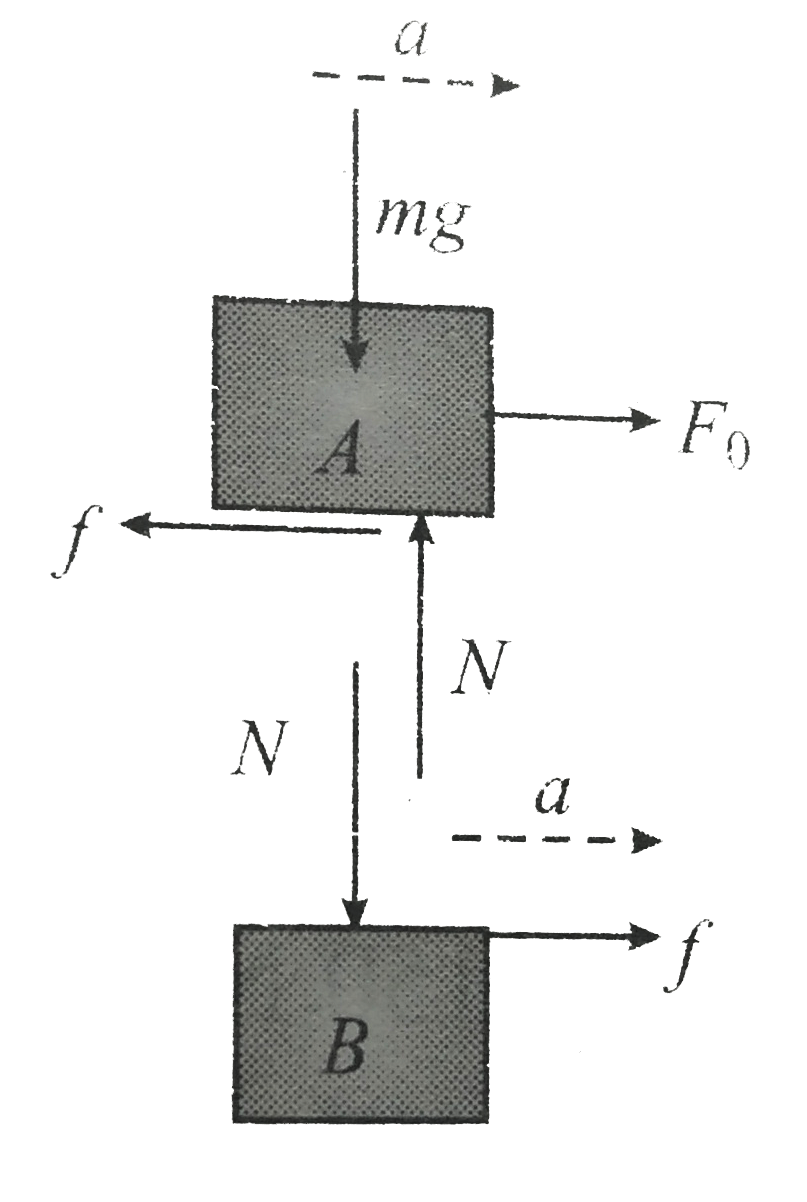
We can conclude that the blocks do not move togather.
New drawing the FBD of each , for finding out individual acceleration
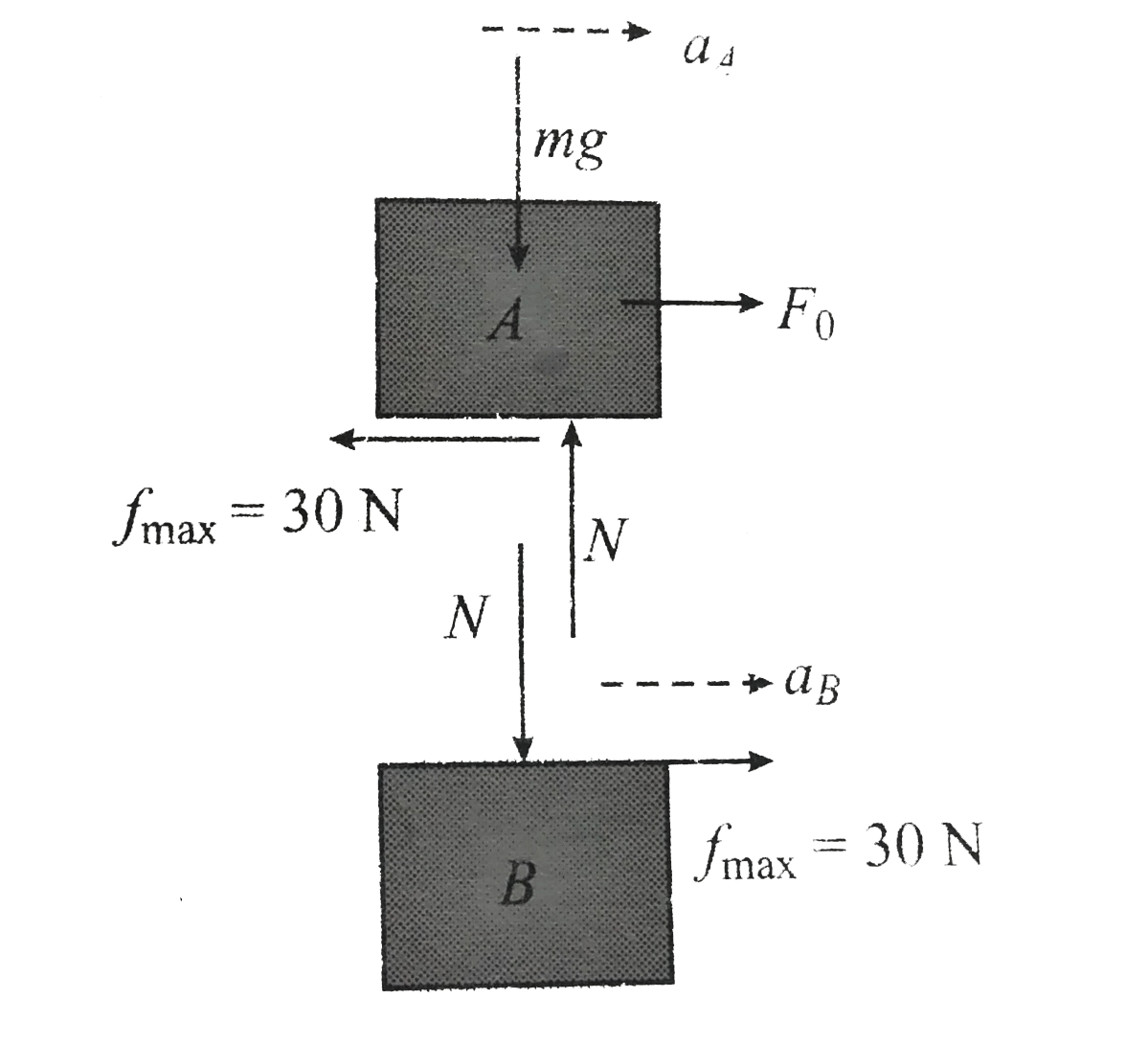
Acceleration of A
aA=120−3010=9ms−2 toward right
Acceleration of B
aB=3020=1.5ms−2 toward right
Case II: F is increased from zero till the two blocks just start moving togather .

As the two blocks move together , the friction is static in nature and its value is limiting FBD in this case will be
aA=120−3010=9ms−2
⇒aB=F+3020=aA⇒F+3020=9 or F=150N
Hence , when 0<F<150N , the blocks do not move together and the friction is kinetic Asd F increase, acceleration of blocks B increases from 1.5ms−2→9ms−2
At F=150N, limiting static frictionstatic acting and the two blocks starts moving togather
Case III : When F is increased above 150N In this scenario, the static friction adjusts itself so as to keep the blocks moving togather . The value of static friction starts reducing but the deriction still remain same This direction still the value of friction becomes zero In this case , the FBD is as follows
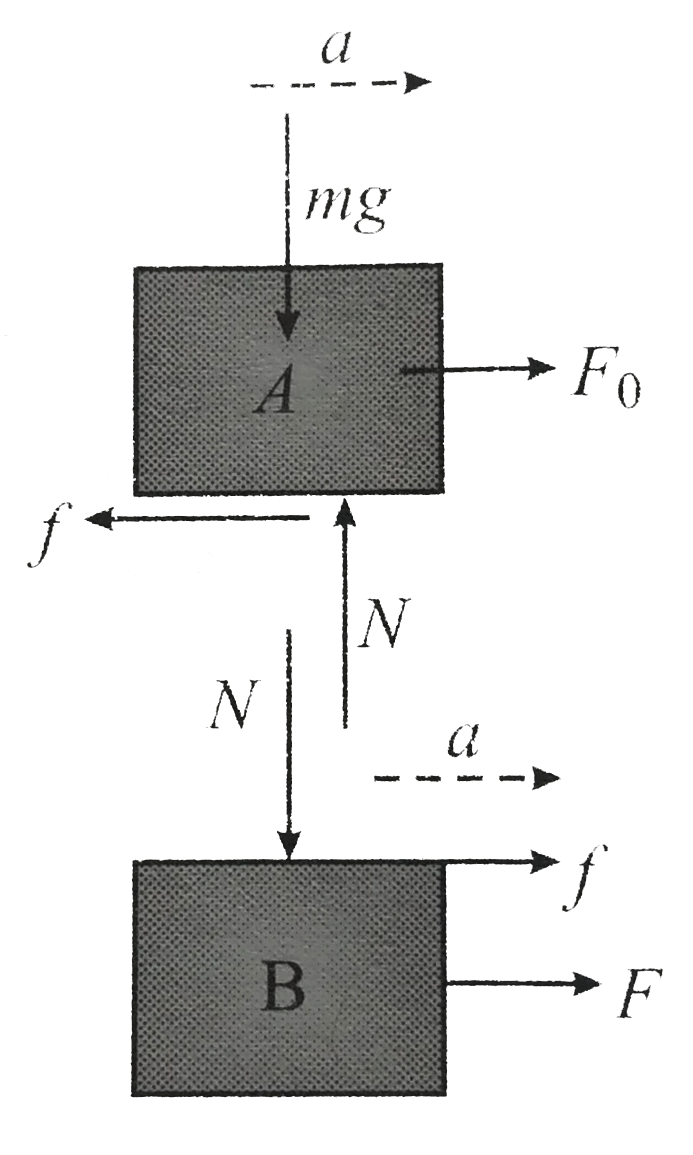
aA=aB=120−f10=F+f20
Therefore when the friction force f gets reduced to zero , the above acceleration become
aA=120−1010=12ms−2⇒aB=F20=aA=12ms−2
∴F=240N
Hence when 150N≤F≤240N the static friction force continously decreases from maximum to zero at F=240N , The acceleration of the blocks increases from 9ms−2 to 12ms2 during the change of force F
Case iv : when F is increased again from 240N The decrease of friction firce on the block reveeses but it is still static F can be increased till this reverse static friction reaches its limiting value FBD at this jucture will be The blocks move togather , therefore

aA=120+3010=15ms−2
⇒aB=F−3020=aA=15ms−2
∴F−3020=15ms−2
Hence F=330N
Case V: When F is increased beyond 330N In this case . the limiting friction is achived and slipping takes place .
Topper's Solved these Questions
- BOOK - CENGAGE PHYSICSCHAPTER - NEWTON'S LAWS OF MOTION 2EXERCISE - Solved Examples12videos
NEWTON'S LAWS OF MOTION 2
- BOOK - CENGAGE PHYSICSCHAPTER - NEWTON'S LAWS OF MOTION 2EXERCISE - Exercise 7.125videos
NEWTON'S LAWS OF MOTION 2
- BOOK - CENGAGE PHYSICSCHAPTER - NEWTON'S LAWS OF MOTION 1EXERCISE - Integer5videos
NEWTON'S LAWS OF MOTION 1
- BOOK - CENGAGE PHYSICSCHAPTER - PROPERTIES OF SOLIDS AND FLUIDSEXERCISE - INTEGER_TYPE2videos
PROPERTIES OF SOLIDS AND FLUIDS
Similar Questions
The frictional force acting on 1 kg block is
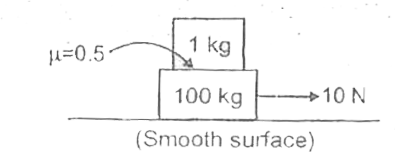 View Solution
View SolutionThe metal blocks A and B of masses 2 kg and 1 kg , respectively are in contact on a frictionless table A constant horizontal force of 3 N is applied to the block A . Calculate the force of constant between the two blocks . If the same force is applied to the block B then what will be the force of contact ? Can you explain the difference ?
View Solution
Knowledge Check
- Question 1 - Select One
As shown in the figure , the friction force acting on the block is
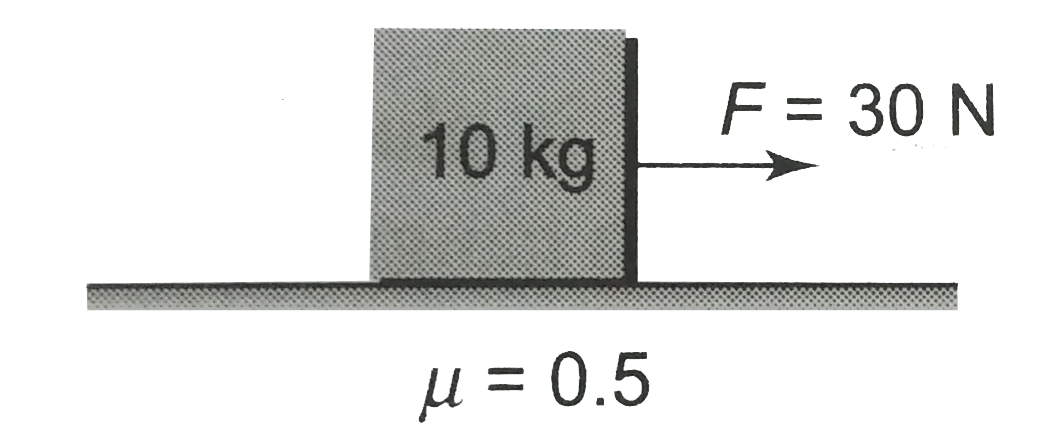 A50NB30NC20NDNone
A50NB30NC20NDNone - Question 2 - Select One
A horizontal force F acts on the block of mass m and the block remains stationary, thr value of friction force is.
 AμmgBμmg−FCFDzero
AμmgBμmg−FCFDzero - Question 3 - Select One
For the arrangement as shown in the figure the maximum force F, for no relative motion between blocks is
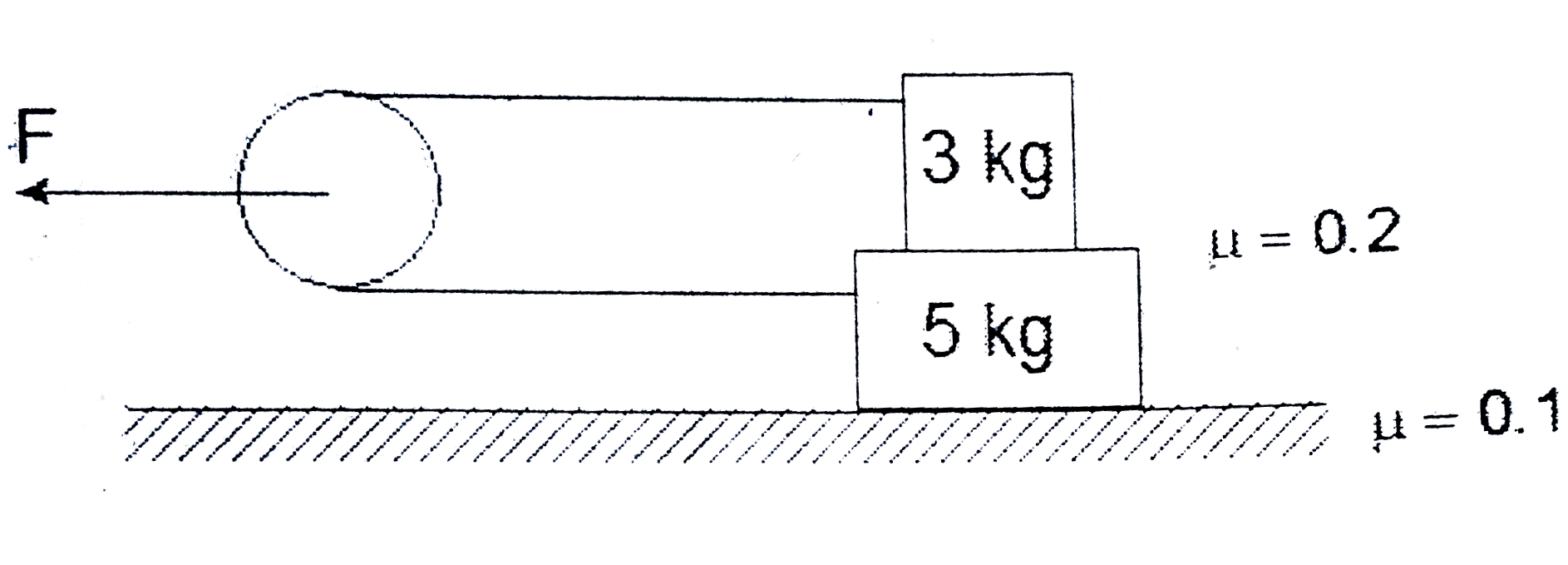 A12NB8NC20ND24N
A12NB8NC20ND24N
If in pervious problem, an additional force F'=100N is applied in vertical direction as shown in figure The friction force acting on the block is
View SolutionTwo bodies A and B of masses 10kgand5kg placed very slightly separated as shown in figure The coefficient of friction between the floor and the block are as μs=0.4 block A is pushed by an external force F The value of F can be changed when the weight between block A and ground breaks block A will start pressing block B will start pressing the vertical wall

If F=50N, the friction force acting between block B and ground will beView SolutionTwo bodies A and B of masses 10kgand5kg placed very slightly seperated as shown in figure The coefficient of friction between the floor and the block are as μs=0.4 block A is pushed by an external force F The value of F can be changed when the weight between block A and ground breaks block A will start prssing block B will start pressing the vertical wall
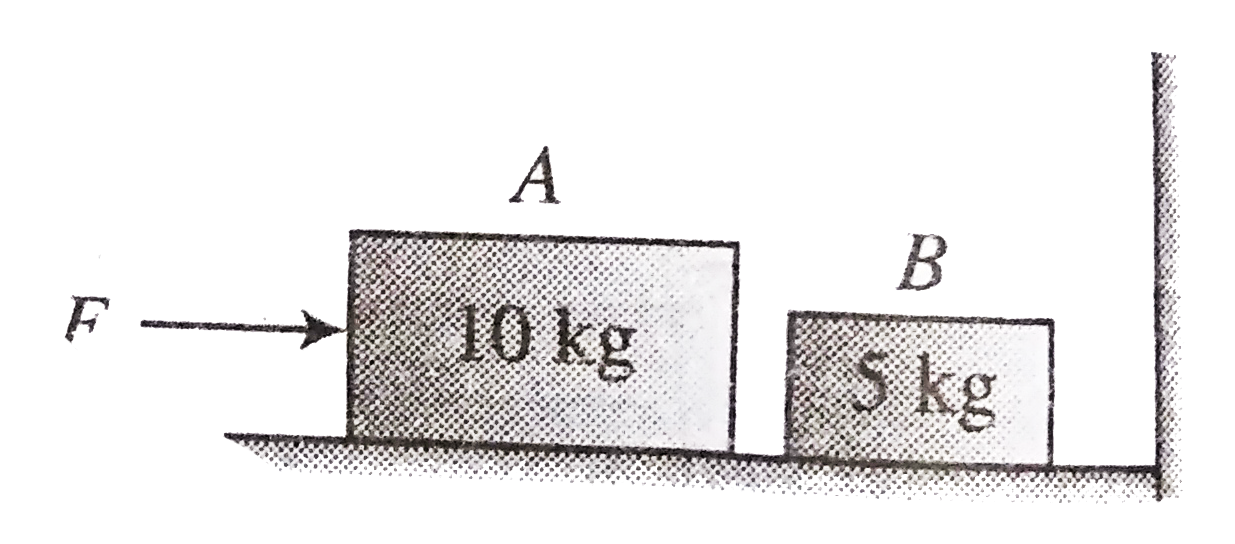
The force of friction acting on B verius with the applied force F acceleration to curveView SolutionTwo bodies A and B of masses 10kg and 5kg placed very slightly seperated as shown in figure The coefficient of friction between the floor and the block are as μs=0.4 block A is pushed by an external force F The value of F can be changed when the weight between block A and ground breaks block A will start prssing block B will start pressing the vertical wall

If F=20N,with how much force block A press block B?View SolutionA force of 50N acts in the direction as shown in figure. The block of mass 5kg, resting on a smooth horizontal surface. Find out the acceleration of the block.
 View Solution
View Solution

